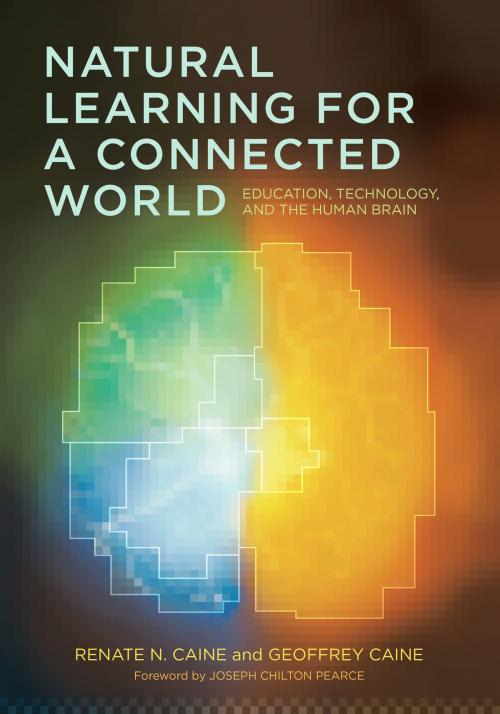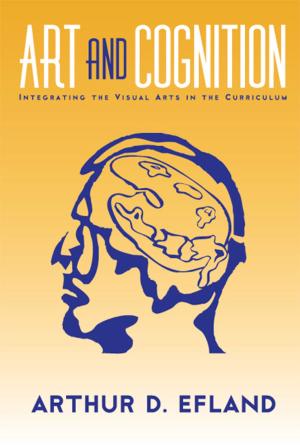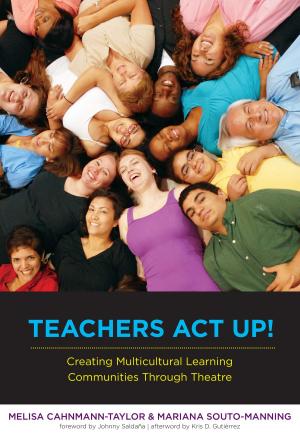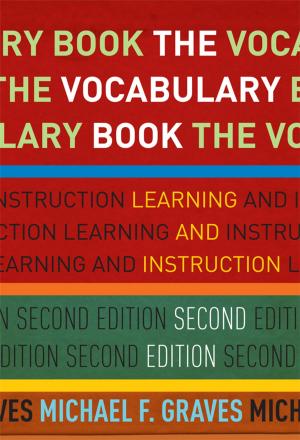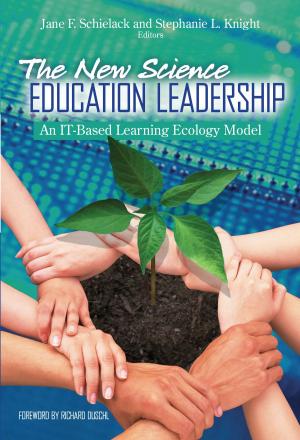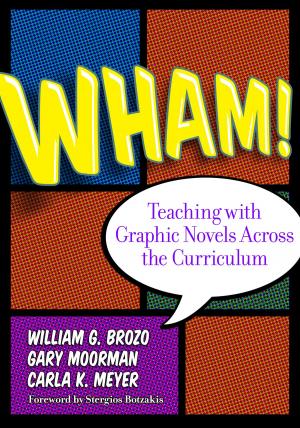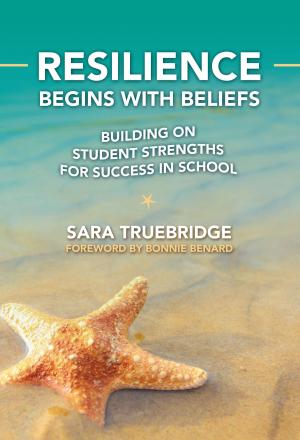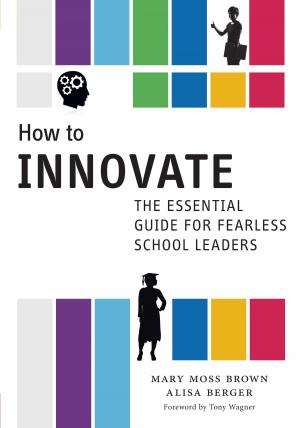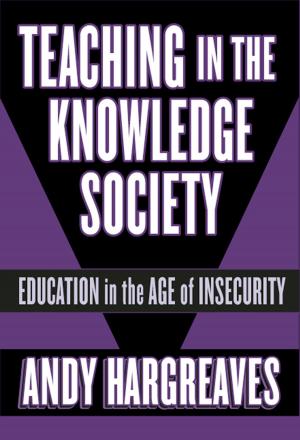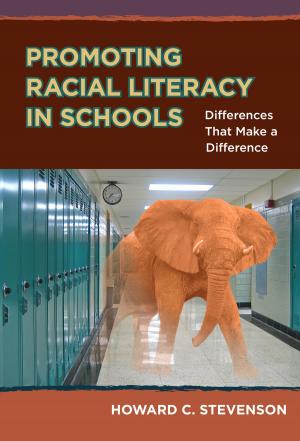Natural Learning for a Connected World
Education, Technology, and the Human Brain
Nonfiction, Reference & Language, Education & Teaching, Teaching, Computers & Technology| Author: | Renate H. Caine, Geoffrey Caine | ISBN: | 9780807770733 |
| Publisher: | Teachers College Press | Publication: | December 15, 2009 |
| Imprint: | Language: | English |
| Author: | Renate H. Caine, Geoffrey Caine |
| ISBN: | 9780807770733 |
| Publisher: | Teachers College Press |
| Publication: | December 15, 2009 |
| Imprint: | |
| Language: | English |
Why do video games fascinate kids so much that they will spend hours pursuing a difficult skill? Why don’t they apply this kind of intensity to their schoolwork? These questions are answered by the authors who pioneered brain/mind learning with the publication of Making Connections: Teaching and the Human Brain. In their new book, Natural Learning for a Connected World, Caine and Caine build a bridge to the future of education with a dynamic model of teaching that works for all grade levels and all cultural and ethnic groups. The authors’ education model, the Guided Experience Approach, is based on the scientific foundation of learning as a totally natural, continuous interaction between perception and action. This important book provides a practical, step-by-step description and successful examples from practice so that we can finally provide the learning environments essential for our children to thrive in the knowledge age.
Book Features:
- Describes an approach for integrating technology into teaching that will help all students learn with greater depth and ease.
- Synthesizes research from neuroscience, cognitive psychology, biology, and education.
- Contrasts the ways in which video games are designed with the way students are taught in school, demonstrating traditional education’s inconsistencies with how the brain learns best.
Renate N. Caine is a codirector of the Caine Learning Center, the Director of Research and Professional Development of the Natural Learning Research Institute, and Professor Emerita of Education at California State University in San Bernardino (CSUSB). Geoffrey Caine is a codirector of the Caine Learning Center and Executive Director of the Natural Learning Research Institute.
“Were I younger and more vigorous, I would go on the road again just to promote this book....[It] presents an entirely new idea of how children learn naturally and how videotech can serve and be used for a new approach to education....America has always excelled in creativity and to lose that gift may be far more devastating than testing poorly. The journey calls for the creative inclusion of technology, and this book shows how to get there.”
—From the Foreword by Joseph Chilton Pearce, author of Crack in the Cosmic Egg and Magical Child
“Changing old ways of thinking about education is the most difficult obstacle to creating the schools needed for this century. Renate and Geoffrey Caine have written an excellent guide to meet this urgent need, blending research from neuroscience with valuable insights from their direct work with teachers and students.”
—Milton Chen, Senior Fellow, The George Lucas Educational Foundation, author of Education Nation
"Finally someone is making the connection between use of technology, our new understanding of brain science, and their combined influence on children."
—Sharon N. Delgado, Reading Specialist, Baltimore County Public Schools
"Renate and Geoffrey Caine bring recent excitement about situated cognition and the perception-action cycle to the educational setting in this new book, a culmination of their decades of work linking brain research to the classroom."
—Lynn Nadel, Regents Professor, Department of Psychology, University of Arizona
Why do video games fascinate kids so much that they will spend hours pursuing a difficult skill? Why don’t they apply this kind of intensity to their schoolwork? These questions are answered by the authors who pioneered brain/mind learning with the publication of Making Connections: Teaching and the Human Brain. In their new book, Natural Learning for a Connected World, Caine and Caine build a bridge to the future of education with a dynamic model of teaching that works for all grade levels and all cultural and ethnic groups. The authors’ education model, the Guided Experience Approach, is based on the scientific foundation of learning as a totally natural, continuous interaction between perception and action. This important book provides a practical, step-by-step description and successful examples from practice so that we can finally provide the learning environments essential for our children to thrive in the knowledge age.
Book Features:
- Describes an approach for integrating technology into teaching that will help all students learn with greater depth and ease.
- Synthesizes research from neuroscience, cognitive psychology, biology, and education.
- Contrasts the ways in which video games are designed with the way students are taught in school, demonstrating traditional education’s inconsistencies with how the brain learns best.
Renate N. Caine is a codirector of the Caine Learning Center, the Director of Research and Professional Development of the Natural Learning Research Institute, and Professor Emerita of Education at California State University in San Bernardino (CSUSB). Geoffrey Caine is a codirector of the Caine Learning Center and Executive Director of the Natural Learning Research Institute.
“Were I younger and more vigorous, I would go on the road again just to promote this book....[It] presents an entirely new idea of how children learn naturally and how videotech can serve and be used for a new approach to education....America has always excelled in creativity and to lose that gift may be far more devastating than testing poorly. The journey calls for the creative inclusion of technology, and this book shows how to get there.”
—From the Foreword by Joseph Chilton Pearce, author of Crack in the Cosmic Egg and Magical Child
“Changing old ways of thinking about education is the most difficult obstacle to creating the schools needed for this century. Renate and Geoffrey Caine have written an excellent guide to meet this urgent need, blending research from neuroscience with valuable insights from their direct work with teachers and students.”
—Milton Chen, Senior Fellow, The George Lucas Educational Foundation, author of Education Nation
"Finally someone is making the connection between use of technology, our new understanding of brain science, and their combined influence on children."
—Sharon N. Delgado, Reading Specialist, Baltimore County Public Schools
"Renate and Geoffrey Caine bring recent excitement about situated cognition and the perception-action cycle to the educational setting in this new book, a culmination of their decades of work linking brain research to the classroom."
—Lynn Nadel, Regents Professor, Department of Psychology, University of Arizona
